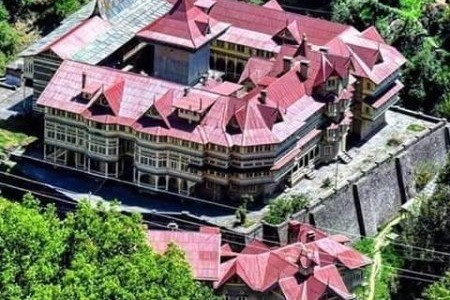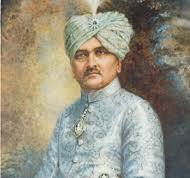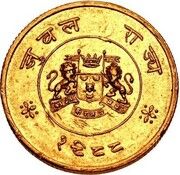Jubbal State :-
historically known as Jubbal State, was a princely state located in the Shimla Hills of present-day Himachal Pradesh, India. It was founded in the early 12th century and was ruled by the descendants of the Bushehr dynasty. The capital of the state was the city of Jubbal, now part of Shimla district.
During the British Raj, Jubbal State was one of the many princely states that existed in India. After India gained independence in 1947, Jubbal State became part of the Indian Union and its ruling family received privy purses until the privileges of princely states were abolished in 1971.
Nowadays, the area that once belonged to Jubbal State is part of Himachal Pradesh. It is known for its picturesque landscapes, apple orchards and tourist attractions.

Jubbal State was established around 1100 AD
and is located between Sirmaur and Rampur-Bushshahr, east of Shimla. Ravingarh and Dhadi were tributaries of this state. During the reign of Raja Rana Bhagat Chand, the work was conducted departmentally. The state was occupied by Nepal from 1803 to 1815 and by the British from 1832 to 1840. In 1840 the Rana had a military force of 50 infantry.

Jubbal State king detile
- Rana Ugran Chand was the Jubbal’s Rana from 1519 to 1527. He was succeeded by Rana Karan Chand, who was the Rana of Jubbal from 1527 to 1558. After him, Rana Amar Chand ruled from 1558 to 1575. Then came Rana Ambu Chand, who ruled from 1575 to 1616, followed by Rana Kirti Chand, from 1616 to 1629. After him, Rana Bhag Chand ruled from 1629 to 1676. Rana Narayan Chand succeeded him from 1676 to 1680, followed by Rana Tarem Chand, who ruled from 1680 to 1681. Rana Roop Chand succeeded him and ruled from 1681 to 1690, followed by Rana Teg Chand, from 1690 to 1699. Rana Gohar Chand ruled Jubbal from 1699 to 1720, followed by Rana Narpat Chand, from 1720 to 1738. Rana Yoga Chand ruled from 1738 to 1758, while Rana Hukam Chand ruled from 1768 to 1773. Rana Paras Chand succeeded him and ruled from 1773 to 1802, followed by Rana Puran Chand, who ruled Jubbal from 1802 to 1839. Rana Karam Chand succeeded him and ruled from 1839 to 1877, followed by Rana Padam Chand, who ruled from 1877 to 1898. Rana Gyan Chand ruled from 1898 to 1910, while Raja Rana Sir Bhagat Chand Bahadur ruled from 1910 to 1946. Raja Rana Digvijay Chand succeeded him and ruled from 1946 to 1966, followed by Raja Rana Yogendra Chand, who has been ruling Jubbal since 1966. This is a brief introduction to the Ranas and Rajas of Jubbal.
Jubbal State
- Rana Ugran Chand was the Jubbal’s Rana from 1519 to 1527. He was succeeded by Rana Karan Chand, who was the Rana of Jubbal from 1527 to 1558. After him, Rana Amar Chand ruled from 1558 to 1575. Then came Rana Ambu Chand, who ruled from 1575 to 1616, followed by Rana Kirti Chand, from 1616 to 1629. After him, Rana Bhag Chand ruled from 1629 to 1676. Rana Narayan Chand succeeded him from 1676 to 1680, followed by Rana Tarem Chand, who ruled from 1680 to 1681. Rana Roop Chand succeeded him and ruled from 1681 to 1690, followed by Rana Teg Chand, from 1690 to 1699. Rana Gohar Chand ruled Jubbal from 1699 to 1720, followed by Rana Narpat Chand, from 1720 to 1738. Rana Yoga Chand ruled from 1738 to 1758, while Rana Hukam Chand ruled from 1768 to 1773. Rana Paras Chand succeeded him and ruled from 1773 to 1802, followed by Rana Puran Chand, who ruled Jubbal from 1802 to 1839. Rana Karam Chand succeeded him and ruled from 1839 to 1877, followed by Rana Padam Chand, who ruled from 1877 to 1898. Rana Gyan Chand ruled from 1898 to 1910, while Raja Rana Sir Bhagat Chand Bahadur ruled from 1910 to 1946. Raja Rana Digvijay Chand succeeded him and ruled from 1946 to 1966, followed by Raja Rana Yogendra Chand, who has been ruling Jubbal since 1966. This is a brief introduction to the Ranas and Rajas of Jubbal.


The ruling family of Jubbal State belonged to the Bushahr dynasty. Raja Rana Bhagat Chand was the last ruler of Jubbal State, reigning until the integration of the princely states into the Indian Union in 1947.
After the integration, Raja Rana Bhagat Chand continued to be involved in public life, serving as a Member of Parliament (MP) representing the state of Himachal Pradesh in the Indian Parliament. He was also actively involved in philanthropic and developmental activities in the region.
With the abolition of princely privileges in 1971, Raja Rana Bhagat Chand and his family members adapted to the changed circumstances and continued to contribute to the social, cultural, and political life of Himachal Pradesh.
- It’s worth noting that the information provided is based on historical records up to my last update in January 2022. For the most up-to-date information, you may need to refer to contemporary sources or local archives.
Jubbal State
- It’s worth noting that the information provided is based on historical records up to my last update in January 2022. For the most up-to-date information, you may need to refer to contemporary sources or local archives.
🙏🏻
❤️
Pingback: how to earn money online
Pingback: Shimla: The Queen of Hills
Pingback: संध्या वन्दना पूजा - kapil sharma